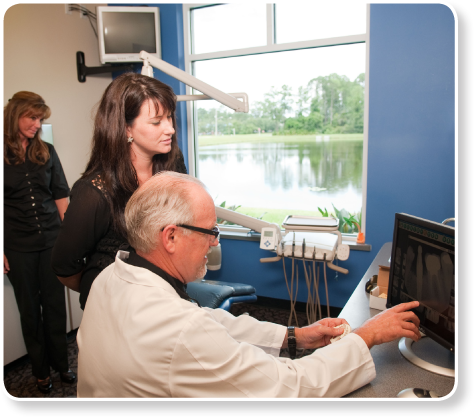What Anesthesia Options Does a Dentist Offer?
May 11, 2021

Most visits to the dentist are normally just for a cleaning. However, sometimes you’ll need to go to the dentist for something more serious. In these cases, anesthesia may be required. But what kinds of anesthesia are there and what are they used for? Can you request a specific type of anesthesia?
What Types of Anesthesia Do Dentists Offer?
There are four types of anesthesia typically available at a dental practice:
- Numbing gel
- Local anesthesia
- Sedative
- General anesthesia
Numbing Gel
Numbing gel, which also comes in a rinse, is a topical anesthetic that numbs a specific area for a few minutes.
Local Anesthesia
Similar to a numbing gel, local anesthesia is meant to numb a specific area of the mouth. However, local anesthetics are usually injections into the tissue of the area in question. They also usually last longer, although the length of time depends on the type of local anesthetic.
Sedative
Sedatives are medications administered orally, inhaled, or intravenously. Depending on the type of sedative used, they affect the state of a patient’s consciousness by relaxing a patient or affecting the patient’s memory of the procedure.
Sedatives have varying levels of effectiveness. Mild sedatives may see patients fully conscious but more relaxed. Deep sedatives may render a patient unaware of their surroundings.
General Anesthesia
General anesthesia renders a patient completely unconscious. It also relaxes muscles, relieves pain, and induces amnesia so that patients won’t remember the procedure.
What Dental Procedures Requires Anesthesia?
A cleaning only needs anesthesia if there is an area of your mouth that is particularly sensitive. In that case, a dentist may use a topical numbing gel to numb the area for a few minutes while they clean. But what procedures call for other types of anesthesia?
What Procedures Use Local Anesthesia?
Most reconstructive dental procedures call for local anesthesia. They’re simpler procedures that won’t take terribly long to complete and can be numbed using a local anesthetic.
Cavity fillings are an example of a dental procedure that uses local anesthesia. Local anesthesia is used for many procedures (including a root canal) unless the patient is feeling anxious.
What Procedures Use Sedatives?
Sedatives are only used if a patient is particularly anxious.
Sedatives help to calm down and relax a nervous patient. They also range in how conscious the patient remains under the sedative’s effects.
With some sedatives, the patient remains conscious, but the pain is numbed and they don’t typically remember the procedure afterward. Other strengths of sedatives may render a patient to be semiconscious or mostly unconscious and unaware of their surroundings.
What all different types of sedatives have in common is that they relax the patient, numb any potential pain, and typically cause the patient to have amnesia regarding the procedure.
What Procedures Use General Anesthesia?
General anesthesia isn’t commonly used for anything other than oral surgery or other longer procedures. It also may be used if a patient is particularly anxious or fearful about the procedure.
If I’m Afraid of the Dentist, Can I Ask to Be Sedated?
Sedatives and general anesthesia are often used with patients who are anxious or afraid of the dental procedure.
Sedatives will keep a patient relaxed and pain-free, as well as unable to remember the procedure. They may also keep a patient semiconscious or unaware of their surroundings throughout the procedure time.
General anesthesia renders a patient completely unconscious and has the same benefits as sedatives in the sense that the patient won’t feel pain during the procedure nor will remember it afterward.
If you’re afraid of the dentist, consider the possibility of being sedated during your visit, whether it’s a dental procedure or a more routine cleaning.
For informational purposes only.











